Over 300 participants and dozen of volunteers have joined our “Coffee Meets Climate” Event at Jao Tsung-I Academy, Hong Kong on October 1 and 2. Thank you all for taking part in the 2-day Greenpeace’s Low-Carbon Living Festival. The unbearably hot weather at over 33°C in the supposedly autumn time reminded us climate change is around us. While we learn how food and coffee drinking could be highly connected to the climate crisis, let’s keep thinking about how could we continue to lead a low-carbon life on regular days? We have invited several participants to share their feelings and green tips. Hope you will find their tips insightful for your daily green practice.
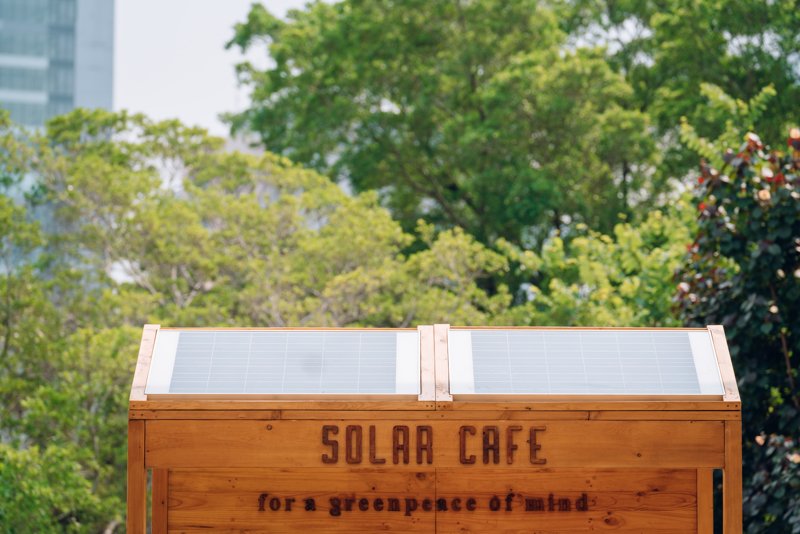
Hong Kong’s renewable energy potential
How did we brew a low carbon coffee? The 5,600Wh electricity generated by 8 solar panels contributed to the brewing of 90 cups of coffee in the 2 days. We gave out these coffees to participants on a complimentary basis. It was how we engage them in experiencing the potentials of renewable energy!
The Chief Executive’s 2021 Policy Address of the Hong Kong Government mentioned the city is striving to reach the carbon neutrality target, a state of “net-zero carbon emissions for electricity generation” by 2050. To meet this end, the share of renewable energy in the fuel mix in Hong Kong will gradually increase to 15%. Looking forward, the Feed-in Tariff (FiT) scheme will remain popular, and we will have more renewable energy choices in the sooner future. The Solar Cafe we reopened at the day would soon be beyond an experimental operation!
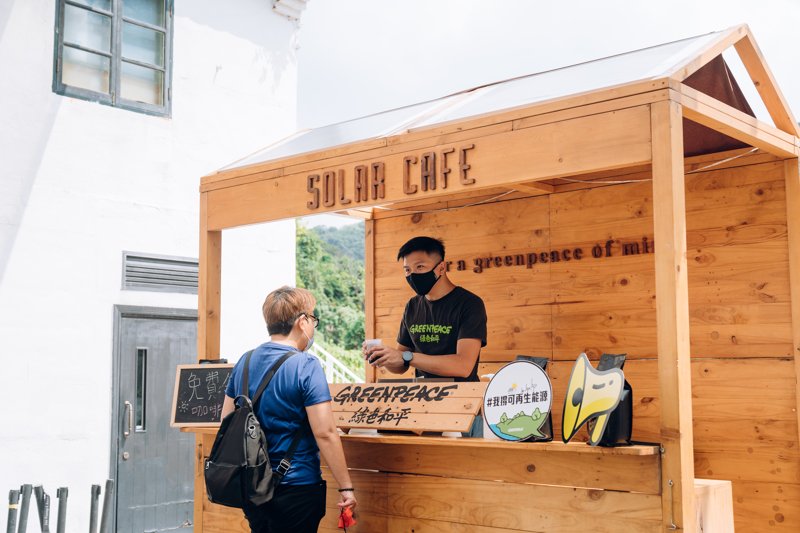
Fun & learnings when “Coffee Meets Climate”
How exhausting it was cycling during the 2 hot days! What was the sweat for? “Power Juicy Bike” was an activity through which participants helped convert energy from cycling to energy powering up a blender. In a minute, a banana smoothie was ready to serve. Let’s give ourselves a big hand for producing over 220 cups of banana smoothie in 2 days! It’s encouraging to see participants bring their own bottles or borrow a container via the We Use Tableware Rental Service. Giving away free drinks does not necessarily mean producing disposable plastic wastes. After all, the smoothie contained in our reusable containers was produced under our sweat, and it tasted more than good!
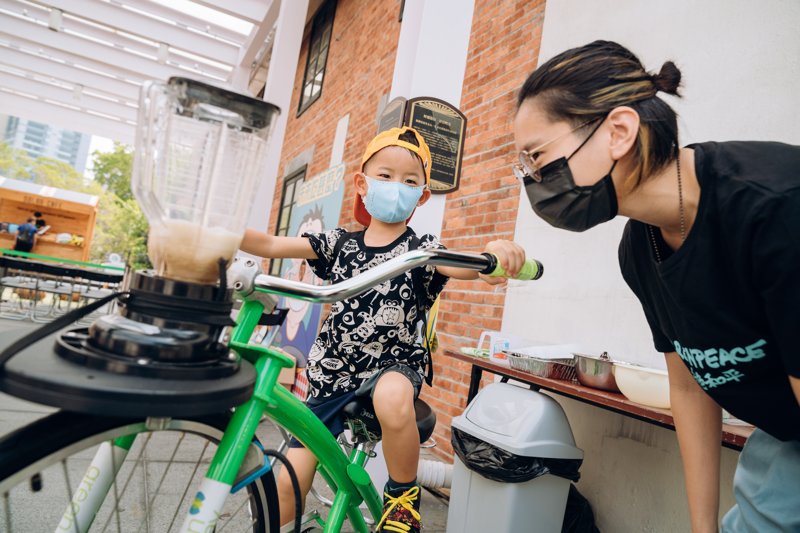
The most popular activity among our little participants were the two game-booths “What do We Eat in Future?” and “If I were a Polar Bear”. Kids lined up one after another for several rounds. The former introduced 4 common food facing impacts on both their supply and quality due to the climate crisis: coffee, salmon, honey, and staples. The latter brought to participants food for thought of our time: what we do every day could speed up the melting of Arctic glaciers.
Display panels erected on site went into details about the “hot nights” and the storm trends in Hong Kong, as well as incidences of extreme global climate. Our street fundraising and outreach officers stood by during the unbearably hot days and explained to participants with supplementary information to the panels. Salute to their great effort and sweat!
Tips from Storyteller PuiPui Mammy and kids
“Our home disappears…” “Let’s paddle together, up and down, up and down!” PuiPui Mammy told stories vividly at the 3 book reading sessions “Storytelling with Kids”. At the sessions, she shared Greenpeace’s original illustration book “Homeless Me” with kids at the event. She engaged kids in the imaginary world of the story, through which they experienced a journey combating the climate crisis, together with the protagonist Bean, and his friends, Polar Bear, Koala, and Clownfish. To PuiPui Mammy, the most unforgettable part was how kids had already had “little basic green knowledge in their minds”. The participating kids were able to actively share their low carbon tips with the group, such as switching off electrical appliances when they are not in use and taking public transport. They were able to link up the causal relationship between the rise of sea level and the flooding at the protagonist’s home.
PuiPui Mammy has become a storyteller since 2016. She believes books are the key to knowledge while reading illustration books with kids enables them to think about matters they have yet to experience in life. She suggested starting from waste reduction. “Kids are capable of understanding it and learning it!” It is vital to expose kids to environmental protection knowledge when they are young. By doing so, we would be able to enlighten every hope to save the Earth from climate change in future!
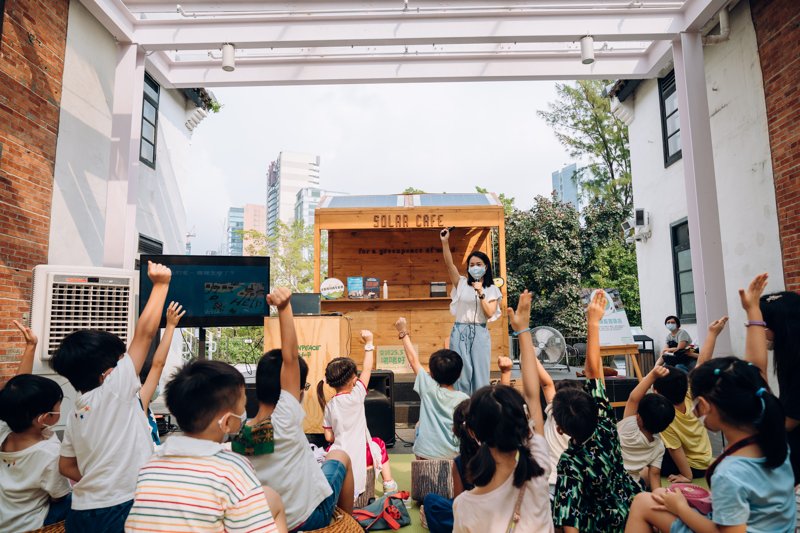
PuiPui Mammy’s Low Carbon Tips:
- Rethink before shopping. See if there is something similar in function at home before buying it
- Have a handkerchief ready for our sweat, avoid consuming tissue paper
- Encourage kids to use both sides of a paper and make full use of drawing tools like color pencils before disposing of them
DIY Coffee Grounds Body Scrub
The 2-day “Coffee Grounds Body Scrub” workshop was highly received. Additional sessions were added on-site and all sessions were completed in full-house. For those who missed the chance to join us at the event, we are now sharing here our recipe for preparing the DIY coffee body scrub. It’s much more environmentally friendly than commercial products which are often made of microbeads and will end up in our ocean as “invisible pollutants”. The used coffee grounds contain active carbon which absorbs our skin waste readily. Blended with brown sugar and coconut oil, the scrub we prepare for ourselves would be a true skin-and-ocean-lover!
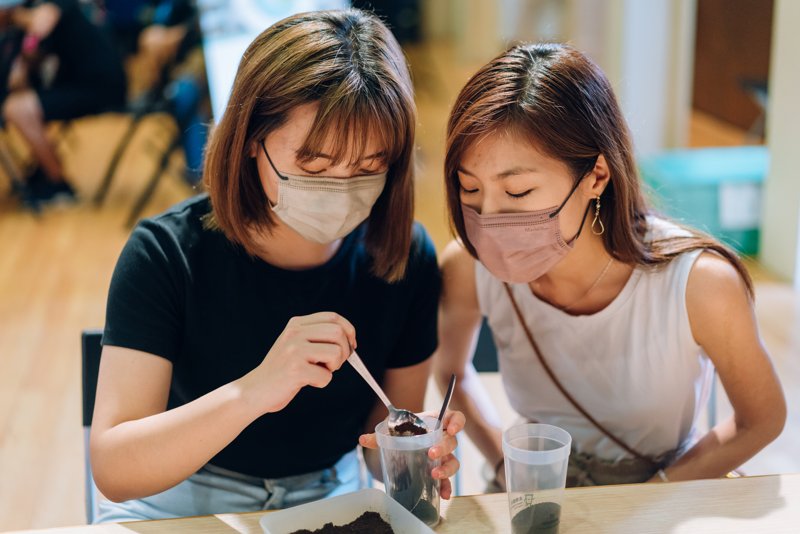
Ingredients (each portion of the coffee grounds body scrub is about 80-100 grams in quantity):
- 30ml coffee grounds (about 2 tablespoons)
- 30ml brown sugar (about 2 tablespoons, crane sugar is fine)
- 45-60ml coconut oil (about 3-4 tablespoons)
Steps:
- Put coffee grounds and brown sugar in a cup
- Prepare another cup of coconut oil
- Stir gently for a minute with a spoon until the brown sugar and coffee grounds mix well with each other
- Gently add coconut oil to the cup of coffee grounds and brown sugar mix, stir for 2 – 3 minutes; adjust the coconut oil amount to your favorable moisture level; feel the texture with the back of your palm; you may want to add essence oil to enrich its scent
- To apply, put the scrub in your hands and rub it gently in a circular motion on your body. Wait for about 5 minutes, then wash away the scrub gently in a circular motion with warm water
Points to note:
- stir the coffee grounds every day so that the bottom part will be exposed to sunlight for more efficient drying; wait till the coffee grounds are completely dry, and store it in a sealed container for future use
- use once every three, four days, avoid storing it for too long
- for sensitive skin users, apply the scrub on the back of your palm before putting it on your face; rub it on your skin gently
People power. Thanks to all who care about the environment
Hosting the “Coffee Tasting Workshop”, Goran, Q-grader and barista and Greenpeace campaigner, Tom, explained how specialty coffee was influenced by extreme weather in terms of its taste and production. Greenpeace donors Miss Mak and Miss Wong, who joined the workshop, unanimously reflected they could feel the weather was getting hotter (in recent years). Environmental protection is about “being responsible for the next generation. Wish it could bring them a better life”. They hope Greenpeace would help spread further green information. Yes, we shall keep our work on and up!
Thanks a lot to our volunteers, who made every effort possible to facilitate the booth operation of the event. Some joined us via volunteer recruitment, our Green Info WhatsApp Group, while some had participated #PlasticFreeNow Community Workshop. We look forward to seeing them again in our next activities. Everyone can play their part in protecting and improving our environment. Though a cliche it may seem when we mention “small steps make a big leap”, this is a motto we truly hold on to!
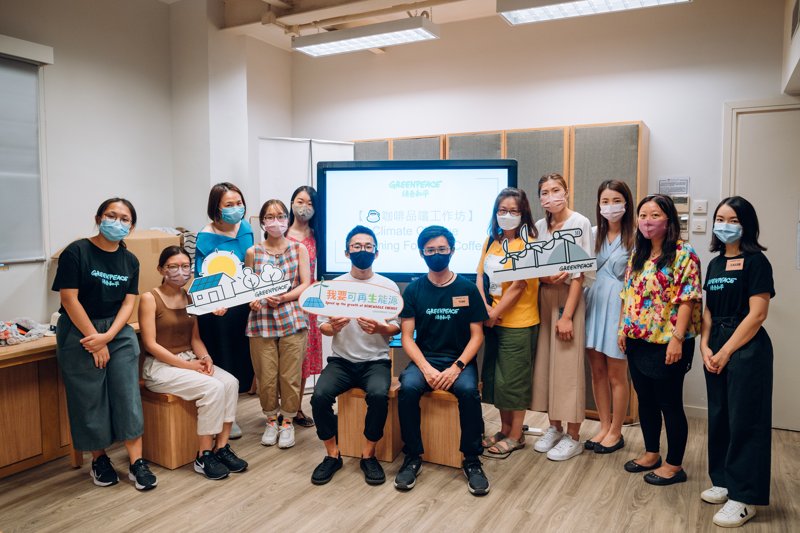
Low Carbon Tips from Greenpeace’s supporters:
- Nurture eating habits for better health and environment: less meat and more vegetables
- Minimize the use of air conditioner: open windows at home for better ventilation
- Minimise the use of electricity and energy, take public transport more often
- “3Rs”: Reuse, Recycle, Reduce
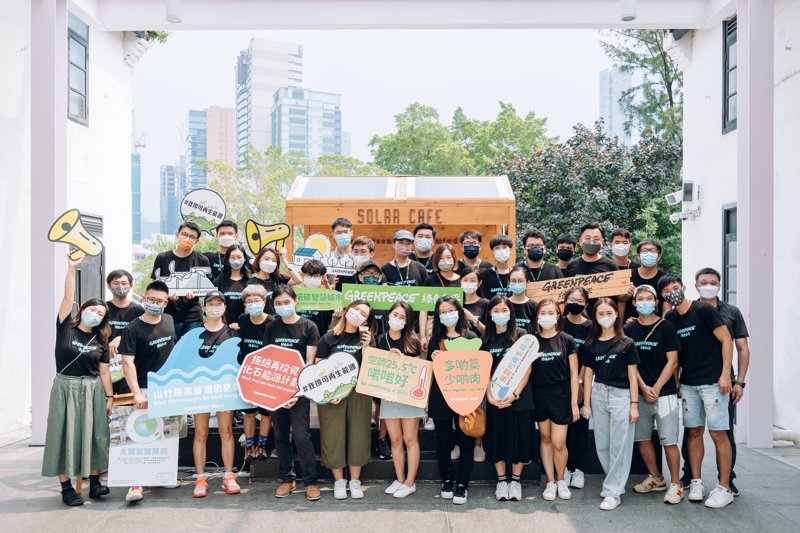
We hope our “Coffee Meets Climate” Days would inspire you to practise green initiatives in your daily life, and explore every positive change possible for the environment. See you next time!
